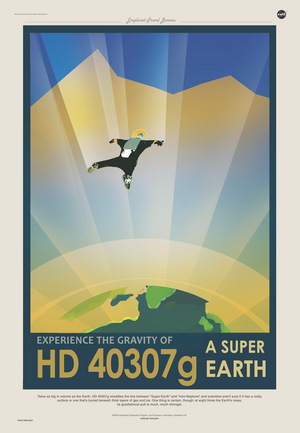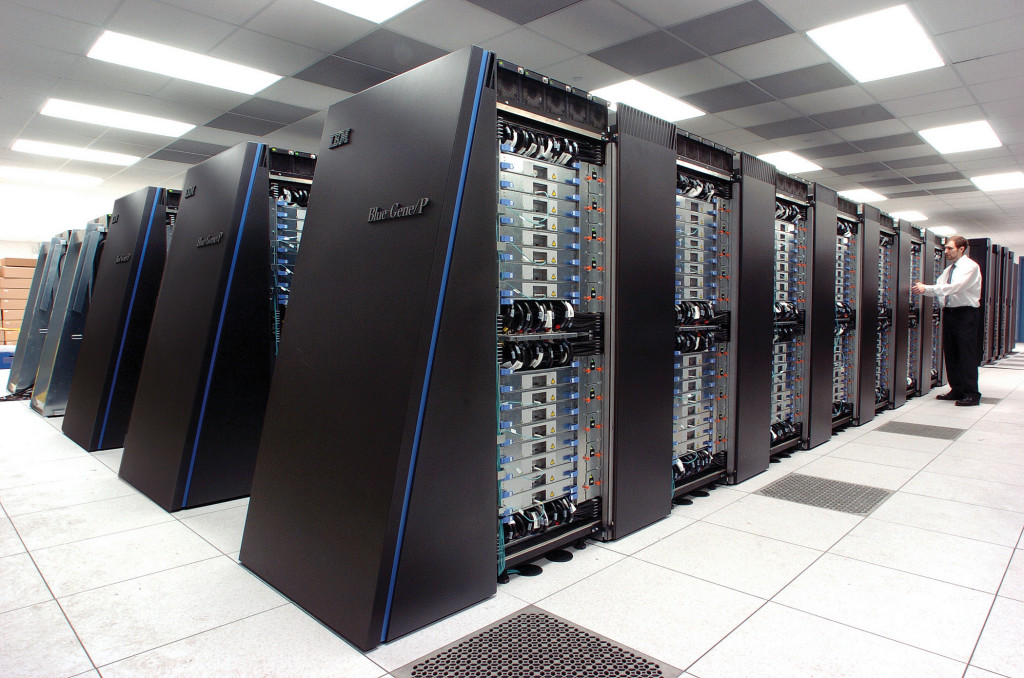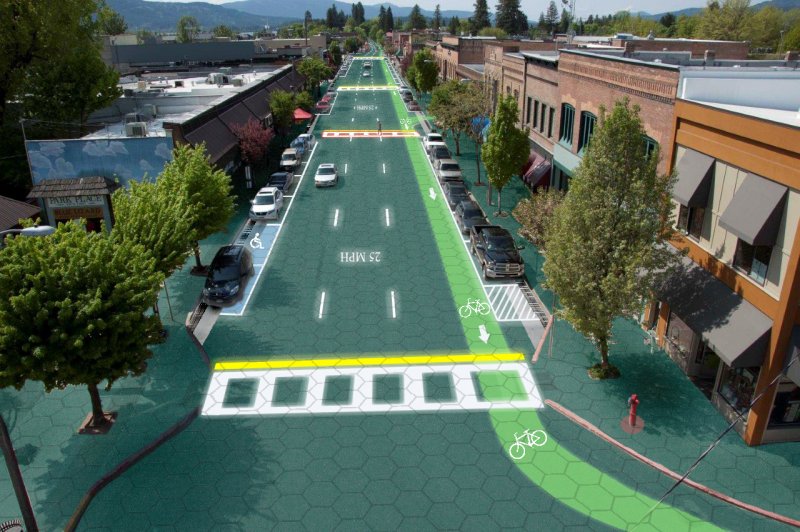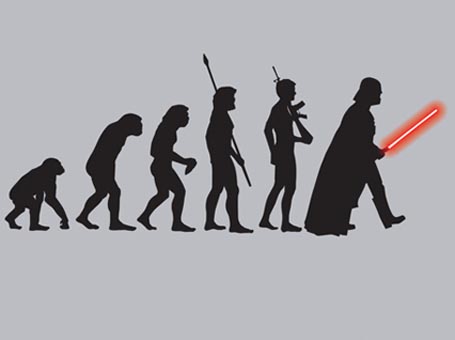-

-

-

-

-

-

-

-

-

-

-
-

-

-

-

-

-

-

-

-

-

-

-

-

-

-

-

-

-

-

-

-

-

-

-

-

-

-

-

-

-

-
-

-

-
 TOTW: Google's Project Ara Modular Phone May Be The Future Of SmartphonesOctober 30, 2014
TOTW: Google's Project Ara Modular Phone May Be The Future Of SmartphonesOctober 30, 2014 -

-

-

-

-

-

-

-

-

-

-

-

-

-

-
-
-

-

-

-

-

-

-

-

-

Posts tagged the future
The Simulation Argument Part #2 – The Hypothesis Explained
09 years
This is the second article in a two-part FFtech series on The Simulation Argument. If you haven’t already read the first article go HERE before reading the following.
In the previous FFtech article on the Simulation Argument, we established that Bostrom’s statement that the first proposition is false is a reasonable assumption. Just to remind you, these are the propositions, and one has to be true:
#1. Civilizations inevitably go extinct before reaching “technological maturity,” the time at which civilization can create a simulation complex enough to simulate conscious human beings. Meaning: no simulations.
#2. Civilizations can reach technological maturity, but those who do have no interest in creating a simulation that houses a world full of conscious humans. Meaning: no simulations. Not even one.
#3. We are almost certainly living in a simulation.
Now, on to the second postulate. Since that we have decided that there are quite likely alien civilizations in the universe that have developed an ability to create “ancestor simulations”, as Bostrom likes to call them, the second postulate says that the alien civilizations just have to interest in creating a simulation of fully conscious human beings. Most likely, a civilization creating a simulation of how humans lived before they reached “technological maturity” will be future humans, as it is less likely that we will have met an alien civilization before develop the capacity to create an ancestor simulation of our own, as the distance from another habitable stars is simply too far away.
(ABOVE: Some very cool illustrations of hypothetical travel ads for habitable planets found with the Kepler satellite)
However the simulation is created, it seems much more likely that at least one alien starts a simulation. If current trends continue, such as the a definitive interest in our ancestors shown in the multitude of historical studies, there will be plenty of people who would like to simulate how their ancestors lived. I know that I would find a simulation of a Greek town fascinating, for example. The idea that not a single person would want to create a simulation seems unlikely, and so therefore the second postulate is likely false.
So, Bostrom’s first postulate is probably false, and the second postulate is just plain unlikely by human (and, more arguably, alien) nature. Based off of that, do we now live in a simulation? Well, not yet. Just because and ancestor simulation exists doesn’t mean that you’re living in it. First, you have to consider the virtual “birth rate” of these simulations. Bostrom also supposes that it takes a lot more effort and time to create a real human than it would a virtual one once a sufficiently advanced technology is developed. Therefore, the ancestor simulation (or simulations) could have many orders of magnitude more virtual humans living inside it then are actual humans, living outside the computer and controlling the simulation. So, if there are thirty virtual humans for every real human, or even numbers up to 1,000 virtual humans to every human, that means the probability that you are one of the few “real” humans rather than a simulated human is very low.
And that, my friends, is the simulation hypothesis.
Of course, there are many assumptions made here, some clear and others subtle, some of which could be used to attack Bostrom’s argument. For instance, one of the major assumptions that Bostrom makes is what he calls “Substrate Independence”. Substrate Independence is the idea that a working, conscious brain can, as he writes in his original paper,
” …supervene on any of a broad class of physical substrates. Provided a system implements the right sort of computational structures and processes, it can be associated with conscious experiences. It is not an essential property of consciousness that it is implemented on carbon-based biological neural networks inside a cranium: silicon-based processors inside a computer could in principle do the trick as well.
Basically, Substrate Independence is the idea that consciousness can take many forms, only one of which is carbon-based biological neural networks. This form of Substrate Independence is pretty hard grasp, which is why Bostrom argues that the full form of Substrate Independence isn’t actually needed for an ancestor simulation. Really, the only form of Substrate Independence needed to create an ancestor simulation is a computer program running well enough to pass the Turing Test with flying colors.
Besides Substrate Independence, most of the rest of the Simulation Argument is fairly simple. Since we have already deduced that there is likely to be at least one ancestor simulation in existence, the likelihood that we are living in that simulation is pretty high. The logic behind this is that the ancestor simulation doesn’t have a set birth rate that can’t be manipulated. The simulation could have as many simulated people in it as they want – though this is stated as obvious, when it is also debatable — and there would be many orders of magnitude more simulated people than actual human people not in a simulation, and even more if there are multiple simulations running at the same time. The present-day parallel is to online video games MMORPGs, which are constantly getting bigger and bigger, with many more characters made in those games than real humans born every second.
Obviously, this argument is very speculative. Substrate Independence, ancestor simulations, the whole thing; it just all seems too far-fetched to be true. And, after all, Bostrom isn’t a computer scientist, he’s works at the Faculty of Philosophy in Oxford. But, that doesn’t mean his argument is false by nature, as in his original paper he goes into incredible detail about computing power, Substrate Independence, and even creates a mathematical formula for calculating the probability we live in a simulation. In fact, if we want to get technical, Bostrom categorizes what I have told you so far as the Simulation Hypothesis, and the full Simulation Argument being the probability equation Bostrom created, some “empirical” facts, and relation to unrefutable philosophical principles. If you want to read Bostrom brilliant albeit a little wordy paper, click HERE.
To sum it up: a man named Nick Bostrom created a series of logical “propositions” that, when examined closely, seem to suggest that there is a very high probability that we are living in a simulation. In fact, the probability is so high that to close his paper, Bostrom writes:
“Unless we are now living in a simulation, our descendants will almost certainly never run an ancestor simulation.”
You may take knowing this however you want. Personally, I think the simulation argument is one of the coolest things to ever come out of philosophy. And if it’s true, that we live in a simulation, that only makes it cooler. After all, we will never know for sure whether we live in a simulation or not, and either way, it doesn’t affect your life the slightest. You have no choice but to continue living your life as you did, maybe in a simulation, maybe not. All this shows is that as technology continues to develop at a rapid pace, we are getting closer and closer to even the wildest of science fiction technologies to become a reality.
Sources: https://www.youtube.com/watch?v=nnl6nY8YKHs http://www.simulation-argument.com/simulation.html
TOTW: The Basic Threshold Into Sentient AI Has Been Passed – Kinda
010 years
For the last 60 years, artificial intelligence experts and computer experts have been striving to solve one puzzle. Or really, pass one test. The founder of the modern computer, Alan Turing (the guy who cracked the Enigma code) created a test way back in 1950 as the threshold onto efficient artificial intelligence. The test is fairly simple. All the computer had to do was convince a panel of judges that it is a real person. Any type of person. A 60 year old professor. A 20 year old computer scientist. Doesn’t matter. And the computer doesn’t even have to fool all of the judges. Just 1 one third of the panel. Even though this seems like this would be fairly easy, it hasn’t been done in 60 years.

This test was Turing was to test the age old question: can computers think. When this test is passed, he though we would be somewhere near that age. There have been some sketchy wins in the past, not really confirmed or in an official setting. But, in the Turing Test 2014 official event, a program called Eugene Goostman completed the test successfully, tricking 33% of the judges into thinking he is the average 13 year old Ukrainian boy. The description given by his “parents” about Eugene is that “His Dad is a gynecologist and he has a hamster”. Seriously. That’s the description they gave him.

Now, before you go around screaming about robotic armageddon in gas stations I should remind you that this means a pretty much nothing. First of all: he is not a sentient being. He isn’t even a being. Eugene is a chatterbot. A program that responds to you in chat, posing as the person they are testing. A chatterbot would have a hard time taking over the world. Secondly, he only convinced 30% of the judges. As the Guardian wrote, 30% of Americans think the Bible is literally true. That doesn’t make it so. It is an achievement, being the first in history to complete this task made by the founding father of technology, but it’s not game changing. When 100% of the judges are fooled, then watch out.

This is a transcript of the conversation between Eugene and a judge that voted human.
Plus, the makers of Eugene were pretty tricky about how they won. Because the target was a 13 year old, they made it acceptable that Eugene could just basically reject the question by saying he didn’t know. Of course, a normal 13 year old would probably do that, and making a program admit to not knowing everything is very smart in trying to duplicate a person. Oh, and english is his second language, so his answers don’t have to perfectly intelligible. Yet, despite all these facts disregarding Eugene’s accomplishment, it still is a fairly big event for all AI geeks out there. After all, this test was made by Alan Turing, computer genius extraordinaire. It may not mean we have sentient computer beings from sci-fi movies, but it’s not nothing. A man-made object fooled a man. Sheesh, we humans are dumb.

If you want to see if Eugene can fool you, here’s your chance. Eugene’s creators put Eugene’s code online, so anyone could try it. I spent a couple of minutes with Eugene, and I wasn’t fooled. I asked him is he was sure if he was 13, and he answered yes then started pressuring me to tell him where I lived. I told him I had a giant candy cane and he said candy is a geek. Obviously, there’s a way to go until computers will be functional as a replacement human.
TOTW: Solar Roadways Raise 1.6 Million On Indiegogo
010 years
In the last few weeks, one couple, Scott and Julie Brusaw, from Sage, Idaho were getting a lot of press for their ingenious idea and video. Their idea and company, Solar Roadways, is basically their own way to help the world in our increasingly difficult struggle against Global Warming. The basic idea is that Solar Roadways wants to replace every paved road, parking lot, playground, school, highway and sidewalks on the planet with their own special solar roadways. These roadways aren’t poured like cements, it’s just a bunch of thick, expensive hexagonal solar panels built to withstand the weight of cars and people that you have to lay down one by one. A long, arduous process. Still, these panels pay for themselves, since after all, they are solar panels.
Along with the awesome solar part, there are other perks of switching to solar roadways. For instance, a set of multicolored LEDs are embedded into the panels, allowing for street lines, parking lot lines, obstacle warnings and even the pressure of the steps of wild animals in the road will be brightly displayed at night, which will definitely stop some accidents and keep the world more organized. But, wait, you have to pay for the batteries or electricity to charge those LEDs, right? Nope! Solar panels!
And that’s not all, folks! For any of you who live in cold, snowy places such as Russia, Michigan and Antarctica, this will be good news for you. Using the solar energy it harvests, the panels and heat up and completely melt the snow right off the road, leaving it safe for cars and bikes. No more days snowed in.
Now, this sounds hunky-dory and all, but these things are not cheap. So, just to get started, Solar Roadways put out an Indiegogo campaign with a hopeful goal of 1 million. Luckily, the internet is full of forward thinking, generous people, and Solar Roadways has raised 1,646,456 dollars, already breaking the record for the highest amount raised and most people backed, previously set by the Nikola Tesla Museum at 1.3 million. This alone is astounding news for the Brusaws, but the money will only keep rolling in, as they still have 22 days left in their funding period.
Not only is solar roadways a more safe alternative than average concrete, but having microchips and LEDs in the roads will open up a infinity amount of possibilities. Who knows? Using the pressure sensors, the chips could talk to automotos cars, adding another layer of protection for any of you doubters. If the energy from the roads will be public, everybody could potentially have an electric car. The company even says that it can cut the greenhouse gas levels by %75. Were all talking about how big of a deal Global Warming is, with report after report saying how well all be flooded in 100 years, but nobody is really doing something about it. Solar Roadways amazing project and idea, and hopefully they will get enough funding to produce it all over the world.
Speculations: Is it an M Class, Spock?
011 years
by FFtech
in Speculations
If you’ve ever seen a sci-fi movie like the Star Wars or Star Trek series, you noticed the abundance of aliens. From humanoids like Vulcans, to more bizarre creatures like Ewoks, aliens always add spice to the films. It’s not easy to make a good space-faring movie without a few aliens!

But how likely is it that if another species (or many, in the case of Star Wars) of aliens contacts us, they will have a human oid form? Well, some scientists think it is as high as eighty percent, yet many take the other side. I will try to summarize both arguments:
Argument 1: Why Aliens Will Most Likely Be Like Humans
To evolve, creatures have to be fit for their habitat. When put under selective pressure, only the slightly faster, more agile, or generally better fit ones will survive. So over time, fitness determines the evolution of species. In our (human) case, we happens to be just fit enough to survive, while also being smart, but intelligence doesn’t have to be paired with being fit. Take the jellyfish for example. It found its own way to survive, while at the same time, appearing about as smart as a floating plastic bag. Yet to contact us, most likely the most clever creature on the planet will be needed.

So, we can expect two things. The first creatures to reach us will likely be fit and smart. Scientists have discussed three specific factors that contribute to evolutionary intelligence: opposable thumbs, spoken language, and a decently-sized brain. Thumbs, to work, write, build, and do a lot of other important things; a language, to communicate; and a big brain, to hold all the information you get from having a language and knowing how to use thumbs.
Being fit is another thing entirely. The creature may have to be able to move relatively fast, which would require two legs, four legs or wings to fly. But, on earth, wings have only evolved on different paths, birds and bats. So, out of all the types of limbs, wings may not be high on the list. Four legs, on the other hand, is more likely, because it evolved many times. Still, two legs are arguably the most efficient, since then you have two “legs” left over to evolve into arms.
Also, to be able to tell where everything around you is, you need your senses. Unless the creature has developed a different way of seeing or hearing like echolocation, they will most likely have ears, eyes, a mouth and a nose. Again, echolocation is relatively rare on earth, (e.g., with bats and dolphins), so could be less likely on other inhabited planets as well. To hold all those senses, you need a face, with a back and a front. Most all animals have that, plus it just seems logical.
So, this is what we’ve got so far: a 2 or 4 legged animal with a back and a front. A face with eyes, a nose, a mouth and ears help determine which is which. It has thumbs which it uses to build, write using its language, and do many other things. Also, to hold information, it has a big brain which makes it’s head very prominent at the top. Sounds like anyone you know?
Argument 2: There is No Chance That Aliens Are Humanoid
On the other side of the case, there are the mathematicians and lots of scientists. They say that earth had a unique turn of events starting with the asteroid that killed the dinosaurs. Then, there happend to be a decently smart creature now called “monkeys”, which because of their environmental particulars, evolved into us, human beings. Everything happening just like that, they say, is absurdly unlikely.
Whether the alien is humanoid or not, we still have to take into account how likely it is for an alien to contact us at all, seeing that they haven’t for the 250,000 years of humanity. Why they haven’t is a problem called Fermi’s Paradox. Here are some solutions scientists have come up over time:
- They just prefer to stay at home.
- Their civilizations die out before they get a chance.
- We’re too far away and it would cost them a fortune.
- They do, but they keep it a secret.
- Earth is too far or too close to the sun.
- This is just my thought, but if they look at us from a really strong telescope, they will be seeing us as we were a very long time ago. Even if they are in our next door neighbor galaxy, the Andromeda Galaxy, they would be seeing “us” two and a half million years ago. One look at our human ancestors and their basic stone tools and the aliens might have ruled us out. And we certainly weren’t broadcasting any TV shows for them to watch back at home!
Even though aliens haven’t contacted us yet, we are almost completely sure they are out there somewhere. In fact, Dr. Frank Drake, head of SETI (Search for Extraterrestrial Intelligence), estimates 10 – 100,000 intelligent civilizations in just in the MILKY WAY ALONE. We are certainly not alone, according to Dr. Drake. It wouldn’t really make sense if we were alone, if you think about it. Here we are, in a oasis of life, with thousands and thousands of species of animals and plants. Can all those other planets be completely be inhabitable? Not likely. So if you meet an alien, whether it is humanoid or not, tell it hi for me.
TOTW: Steve Jobs’ Dream Car
1This week’s Tech Of The Week is an advance in automobile technology and the interplay between smartphones and large-scale consumer products.
Before his death, Steve Jobs had a idea to make Apple an even bigger part of society than it already is. One concept has been called the iCar.

After Jobs died, the idea for an iCar faded, but under new Apple CEO, Tim Cook, there are rumors that the company has started to rethink the idea. An Apple iCar would seamlessly interwork all of Apple’s devices. We could of course expect a typically stylish and futuristic design from Apple as well.
The interior of the car would be a key challenge for the designers. They want it to interwork multiple devices, yet be still a car, not a mobile Apple store. Also, when people shop for cars, they want comfortable seats and attractive dashboards. Apple’s design, like Ford or Tesla, could resonate with the buying public or Apple’s design success for small gadgets might not transfer to large scale products.
“Look at the car industry; it’s a tragedy in America. Who’s designing the cars?” said Mickey Drexler, a long time Apple board member. “Steve Jobs’ dream before he died was to build an iCar.” It will be interesting to see how Apple would do on the car, being a mostly smartphone and computer manufacture. Even without Jobs, Apple will most likely impress the public with a futuristic iCar, just like Steve Jobs wanted.
TechThought: Silver Lightning Concept Car
3711 years
by FFtech
in Recent Posts
Back in 1932, Mercedes Benz released their motor and Formula One racing car, the Silver Arrow. The Silver Arrow was very successful, and the most popular car for german racers in the 1930s. The trademark white, for Germany, decorating the car, the Silver Arrow won many competitions. It even won the French Grand Prix 1-2-3. This type of car was a source of pride to the company and country, and it was only logical to preserve it’s greatness.
79 years later, at the 2011 LA Design Challenge, Mercedes Benz were showing off their concept car, Silver Lighting. Silver Lightning, as you may have guessed, was inspired by Silver Arrow, reintroducing the pride of Mercedes prowess in the racing sport.
As part of their presentation, they made a short film about the car:
Silver Lightning was not only inspired by Silver Arrow, it was also inspired by classic sci-fi movies, as is a lot of technology today. Think about it. The flip-up communicators from Star Trek. In the Silver Lighning’s case, the futuristic lights on the wheels were inspired by Tron: Legacy, and the shape was inspired by Star Wars: Episode II. Along with science fiction, the Silver Lightning embodies everything we want the future to be like: flashy, slick, technologically advanced, and as cool as heck.
Silver Lightning is still not coming out any time soon. It uses a lot of future technologies, like Mag-Tech. Mag-Tech is a retractable roof system, a lot like nowadays convertible roofs. But instead of having to take the whole roof off, this technology would make it easier. Mag-Tech uses small lightweight magnetic squares to quicken the process, and can be quickly put together to make a roof, or easily contracted to make a convertible.
When you look at Silver Lightning, you may be wondering, “Where are the wheels? All I see are rings where the wheels should be!” Totally understandable. Those rings ARE actually the wheels, which is another future technology that might postpone the release of Silver Lightning. The technology is called Omni-Directional Wheels. Inside the rings, there are rollers that are all placed in a different direction, making the car able to move in all directions. This technology would let the driver be able to move the car in all different directions, not just forward and back, and is already being used in the storage and manufacturing business for lifting boxes and heavy objects. Omni-directional wheels would eliminate the need for parallel parking, which in sure many new drivers would be happy about, but the technology isn’t yet ready for implementation into racing or even regular automobiles.
Silver Lightning is designed for speed. The sleek design is perfect for zooming down the freeway or track. But just like Lamborghinis and Maseratis, it will probably become a fancy sports car that like to show off. The problem with many of these technologies, such as the segway, and even Google Glass, is that the hype surrounding them blocks out the unfortunate downsides of the technology itself. It may look cool now, but by the time we get to a point where any of these technologies would be possible, which wouldn’t be that far into the future, there will most likely already be many cars with the same design. Who knows, there may be a time when having a Maserati Silver Lighting would be just as normal as having a Toyota, but for now, it is still a futuristic concept, yet to be built.














